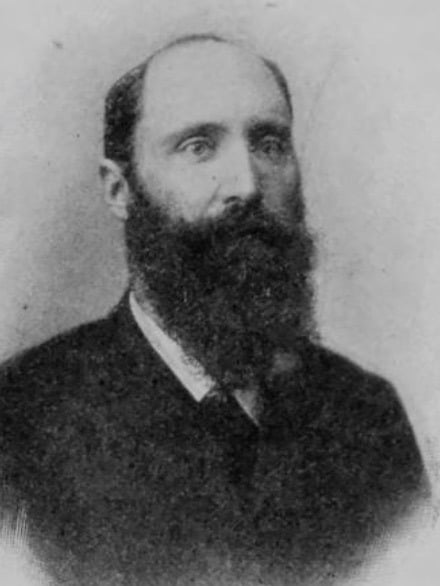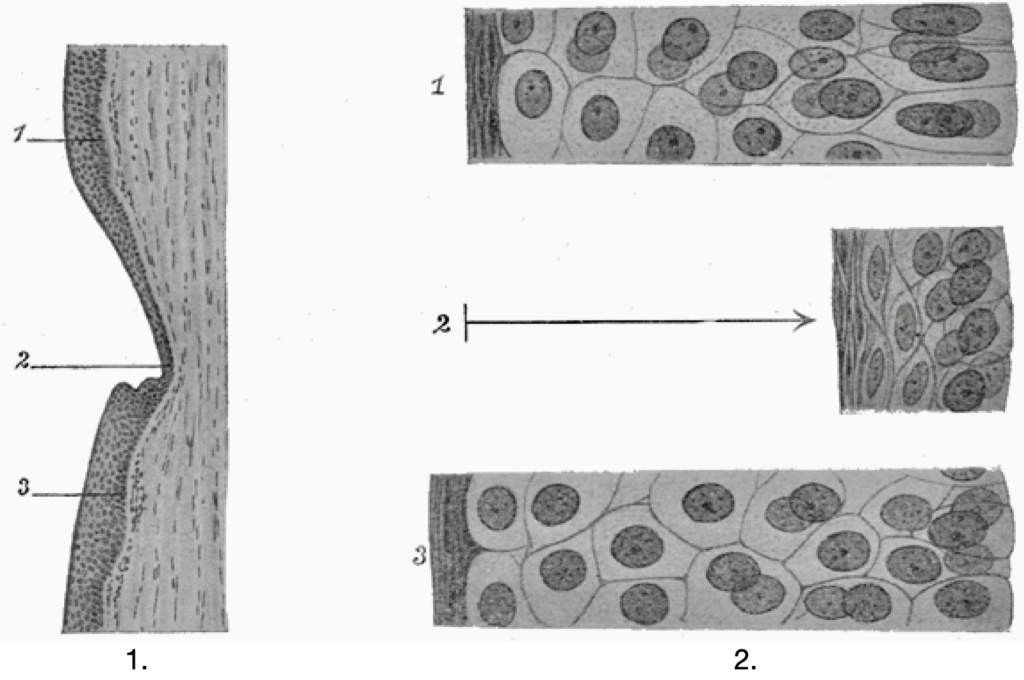Ernst Fuchs
Ernst Fuchs (1851-1930) was an Austrian Professor of Ophthalmology
Fuchs was regarded as a world-famous lecturer and physician speaking in countries far away countries including East Africa, Indonesia and Central America. Over his lifetime, Fuchs’ acquired a collection of more than 40000 histologic specimens and 250 scientific publications. His textbook on the causes and prevention of blindness was considered the bible of ophthalmology for almost 50 years.
Fuchs’ was passionate about mountaineering, botany, literature and geography and was fluent in English, French and Italian and began to learn Spanish at the age of 70 years.
Fuchs was described as a serious teacher and physician but never dogmatic, being aware of the limits of scientific knowledge including medicine.
Eponymously associations include Fuchs’ Dellen, Fuchs Corneal dystrophy, Fuchs Spots in myopia, Fuchs uveitis syndrome and Fuchs coloboma.
Biography
- Born on June 14, 1851 in Vienna, Austria.
- 1860-1868 educated at Scott’s Gymnasium in Vienna
- 1868 – Commenced studying medicine at Vienna School
- 1874 – Received his medical doctorate with excellence
- 1881-1885 Appointed as professor of Ophthalmology in Lüttich, Belgium
- 1885-1915 Appointed as clinical director of the Second Vienna Eye Hospital
- Died on November 21, 1930 in Kritzendorf, Austria.
Medical Eponyms
Fuchs Corneal dystrophy (1910)
Synonym: Fuchs endothelial-epithelial dystrophy
Fuchs endothelial corneal dystrophy is characterised by bilateral endothelial cell loss. Examination signs include:
- central guttata – the presence of irregular warts or excrescences on Descemet membrane secreted by abnormal endothelial cells
- tiny dark spots caused by distribution of the regular endothelial mosaic which progress to a ‘beaten metal appearance’
In 1910, Fuchs reported 13 cases of central corneal clouding, loss of corneal sensation and formation of epithelial bullae which he labelled as ‘dystrophia epithelialis corneae’. Exacerbation of the disease post cataract surgery was noted 1913. In the 1920s, the pathophysiology of Fuchs’ dystrophy was recognised as primarily a disease of the corneal endothelium, with Alfred Vogt a Swiss Ophthalmologist first using the term ‘central guttata’ in 1921.
Fuchs Spots (1901)
Synonym: Forster-Fuchs Black Spot; Förster-Fuchs’ spot
Fuchs Spots is a term used to describe a raised, circular, pigmented lesion at the macular which develops after a subretinal haemorrhage has been absorbed. It is associated with moderate to high myopia.
A rare macular lesion described and illustrated in 1901 by Fuchs as “the central black spot” in myopic eyes.
Fuchs Dellen (aka Fuchs dimples)
Fuchs Dellen is used to describe localised corneal ulceration/thinning associated with a focal area of drying usually adjacent to elevated lesions which impairs physiological lubrication.
Described in 1911 by Fuchs as shallow saucer-like excavations at the margin of the cornea, dellen (singular delle) were described to appear:
- Following swelling of the limbus (in episcleritis, scleritis fugax, angioma, thick pinguecula and after rectus muscle surgery and subconjunctival injections
- Following cocaine administration
- Following cataract surgery
- With hemeralopia
- Following paralytic lagophthalmos
- Spontaneously in elderly persons with otherwise normal eyes
Major Publications
- Fuchs E. Das Sarcom des Uvealtractus. 1882
- Fuchs E. Die Ursachen und die Verhütung der Blindheit. 1885 [English Translation: The Causes and the Prevention of Blindness.]
- Fuchs E. Lehrbuch der Augenheilkunde. 1889 [8e]
- Fuchs E. Ueber Komplikationen der Heterochromie. Ophthalmologica, 1906; 15(3): 191–212. [Fuchs uveitis]
Controversies
References
Biography
- Pagel J. Fuchs, Ernst. Biographisches Lexikon, hervorragender Ärzte des neunzehnten Jahrhunderts. 1901: 566 [Original portrait]
- Ernst Fuchs. In: Ophthalmologist and eponyms . MRCOphth
- Bibliography. Fuchs, Ernst 1851-1930. WorldCat Identities
Eponymous terms
- Fuchs E. Über Dellen in der Hornhaut [On the Dellen in the Cornea]. Albrecht von Graefes Archiv für Ophthalmologie 1911; 78: 82-92 [Fuchs Dellen]
- Baum JL, Mishima S, Boruchoff SA. On the nature of dellen. Arch Ophthalmol. 1968; 79(6): 657-662


